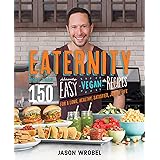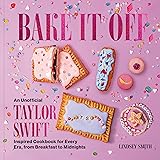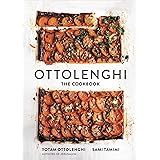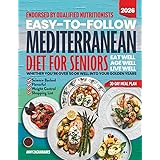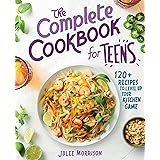Are you tired of feeling hungry and deprived when trying to lose weight? Does the idea of constantly eating less feel unsustainable? If so, you’re not alone. Many people believe that weight loss hinges purely on drastically cutting food intake, leading to frustration and often, giving up. However, as the video above brilliantly illustrates, the key isn’t necessarily to eat *less food* but to eat *more of the right food*.
This powerful concept is known as volume eating, a strategy focused on consuming larger quantities of foods that are low in calorie density but high in nutrients. It’s about making smart choices that fill your plate and your stomach without overwhelming your calorie budget. By understanding how different foods impact satiety and energy intake, you can transform your weight loss journey from a battle against hunger into a satisfying and sustainable path to health.
The Science Behind Eating More to Lose Weight
The fundamental principle of weight loss remains consistent: you need to be in a calorie deficit, meaning you consume fewer calories than your body burns. Yet, the way we achieve this deficit dramatically impacts our success and well-being. The video highlights a critical distinction: 150 calories of nutrient-dense fruits like watermelon, strawberries, or raspberries occupy far more physical space than 150 calories of calorie-dense items such as peanut butter, almonds, or olive oil.
This difference in physical volume for the same caloric value is central to volume eating. Foods with high water and fiber content take up more room in your stomach. They signal fullness to your brain more effectively, leading to greater satiety and reducing the urge to overeat. This approach allows you to feel genuinely satisfied after meals, circumventing the common pitfalls of traditional restrictive diets that often leave individuals feeling deprived and hungry.
Understanding Calorie Density and Satiety
Calorie density refers to the number of calories in a given amount of food, typically measured per gram. Foods with high calorie density pack many calories into a small serving size. Conversely, low calorie density foods provide fewer calories per serving. Vegetables like spinach or broccoli exemplify low-density options, while nuts and oils are examples of high-density foods.
Satiety, or the feeling of fullness, is deeply influenced by calorie density. Research, such as studies published in the journal Appetite, consistently shows that foods with lower energy density contribute to greater satiety and reduced overall calorie intake. Furthermore, foods rich in water and fiber physically expand in the stomach, stretching its walls and activating receptors that signal fullness to the brain. This physiological response is crucial for managing hunger cues effectively and preventing overeating.
Top Foods for Effective Volume Eating
Incorporating volume eating into your diet doesn’t require drastic changes; it’s about making smarter substitutions and additions. The goal is to prioritize foods that offer maximum volume for minimal calories, ensuring you get a wealth of nutrients in the process. Here are some of the best categories to focus on:
Hydrating Fruits and Vegetables
These are the champions of volume eating, incredibly low in calories and packed with water and fiber. The video specifically showcases watermelon, strawberries, and raspberries, which are excellent choices. For instance, 100 grams of watermelon contains roughly 30 calories and over 90% water, offering substantial volume.
- Leafy Greens: Spinach, kale, lettuce, arugula are incredibly low in calories but high in vitamins and fiber. A large salad can be incredibly filling.
- Cruciferous Vegetables: Broccoli, cauliflower, Brussels sprouts are nutrient powerhouses that add significant bulk to any meal.
- Other High-Water Vegetables: Cucumbers, celery, bell peppers, zucchini are fantastic for snacking or bulking up dishes with minimal caloric impact.
- Berries: Strawberries, blueberries, raspberries are loaded with antioxidants, fiber, and water. A cup of strawberries contains around 49 calories and 3 grams of fiber.
- Apples and Oranges: These fruits are excellent sources of fiber and water, contributing to prolonged fullness.
Lean Proteins for Enhanced Satiety
Protein is renowned for its satiating properties, helping to curb hunger and preserve muscle mass during weight loss. While protein isn’t as voluminous as vegetables, lean sources can be integrated into volume meals effectively. Adding protein to low-calorie, high-volume foods creates a balanced meal that keeps you full for longer.
- Chicken Breast and Turkey: Skinless, boneless poultry is a lean protein source that can be added to salads, stir-fries, or soups.
- Fish: Varieties like cod, tilapia, and salmon (in moderation due to healthy fats) offer high protein content with fewer calories than red meats.
- Egg Whites: Extremely low in calories and pure protein, egg whites are perfect for bulking up omelets or scrambles.
- Greek Yogurt: High in protein and often low in fat, it’s a versatile base for fruit parfaits or savory dips.
- Tofu and Tempeh: Plant-based protein sources that can absorb flavors and add satisfying texture to many dishes.
Fiber-Rich Grains and Legumes (in Moderation)
While often denser than fruits and vegetables, certain whole grains and legumes provide essential fiber and protein, contributing significantly to satiety. Portion control is key here, as their calorie density is higher than non-starchy vegetables.
- Oats: A bowl of oatmeal (made with water or unsweetened milk) can be very filling due to its soluble fiber content.
- Quinoa: A complete protein and fiber-rich grain that can replace higher-calorie starches.
- Lentils and Beans: These legumes are packed with fiber and plant-based protein, making them excellent for soups, stews, and salads.
Maximizing the Power of Fiber and Water
Fiber and water are the unsung heroes of volume eating. Water, making up a significant portion of many fruits and vegetables, contributes directly to physical volume without adding calories. Its presence helps fill the stomach, signaling satiety.
Fiber, a type of carbohydrate that the body cannot digest, plays multiple roles in weight management. It adds bulk to food, slows down digestion, and helps regulate blood sugar levels, all of which contribute to prolonged feelings of fullness. According to the Academy of Nutrition and Dietetics, adults should aim for 25-38 grams of fiber per day, an intake easily achieved through a volume-eating approach rich in fruits, vegetables, and whole grains. Increased fiber intake has been linked to lower body weight and a reduced risk of obesity in numerous population studies.
Practical Strategies for Sustainable Volume Eating
Implementing volume eating into your daily routine is simpler than you might think. It’s about making conscious choices and small adjustments that add up to big results:
- Start Meals with a Bang: Begin your lunch or dinner with a large, low-calorie salad dressed lightly or a bowl of clear broth-based soup. This immediately fills your stomach before the main course.
- Bulk Up Existing Dishes: Add extra vegetables to everything. Double the broccoli in your stir-fry, add spinach to your omelets, or mix shredded zucchini into pasta sauces.
- Smart Snacking: Instead of calorie-dense chips or cookies, opt for baby carrots, cucumber slices, or a handful of berries. Keep cut-up vegetables readily available.
- Prioritize Hydration: Drink plenty of water throughout the day. Often, thirst is mistaken for hunger. A glass of water before meals can also help fill your stomach.
- Mindful Eating: Pay attention to your body’s hunger and fullness cues. Eat slowly, savor your food, and truly experience the satisfaction of a full stomach.
By embracing volume eating, you can move away from restrictive diets and toward a more intuitive, satisfying way of nourishing your body. This strategy empowers you to enjoy generous portions of delicious, healthy foods, making your weight loss journey not just effective but also genuinely enjoyable.



